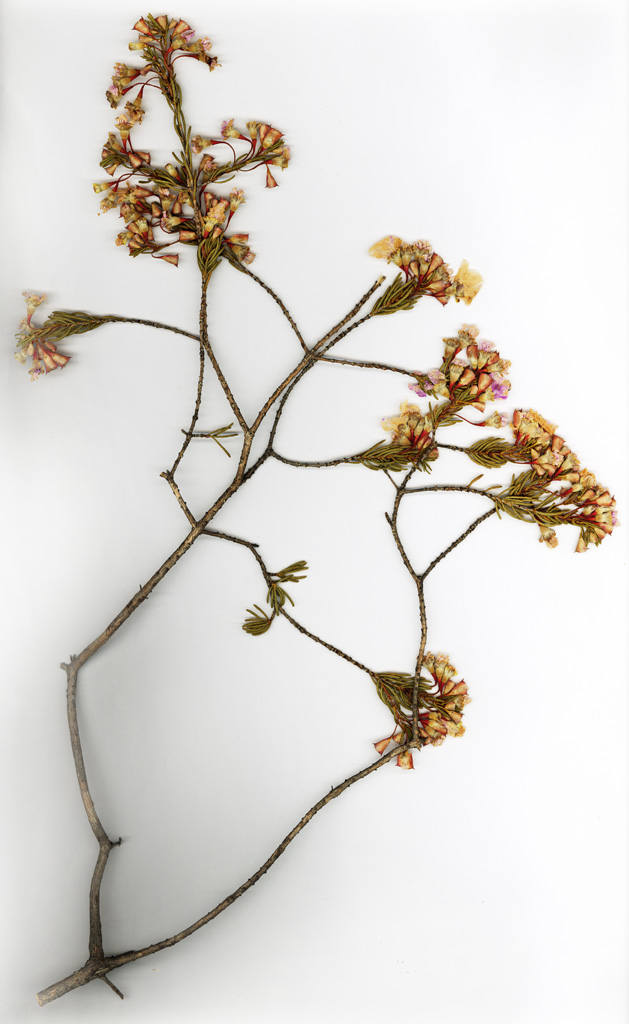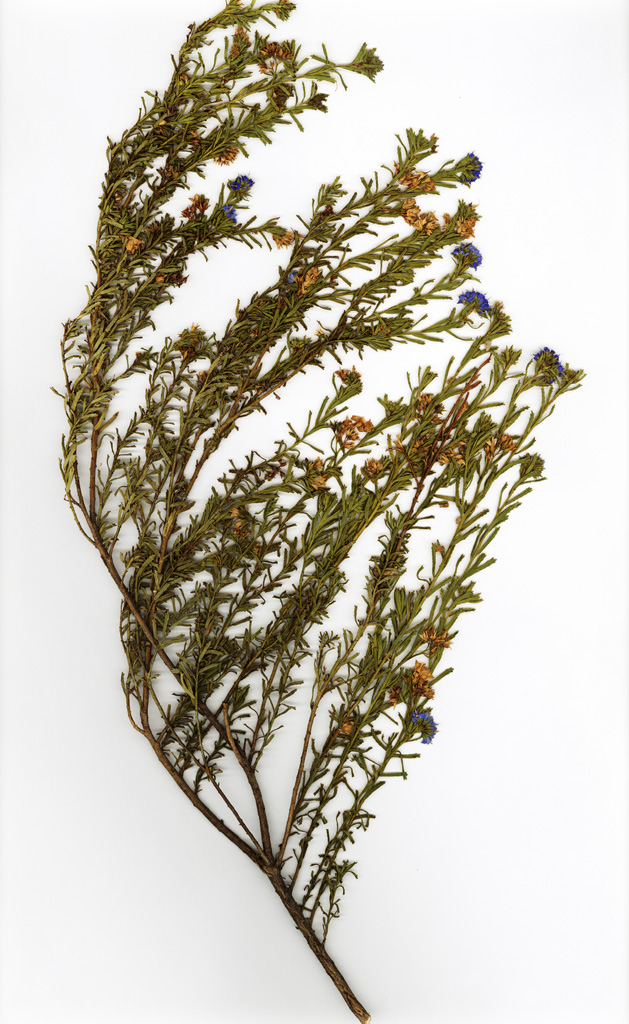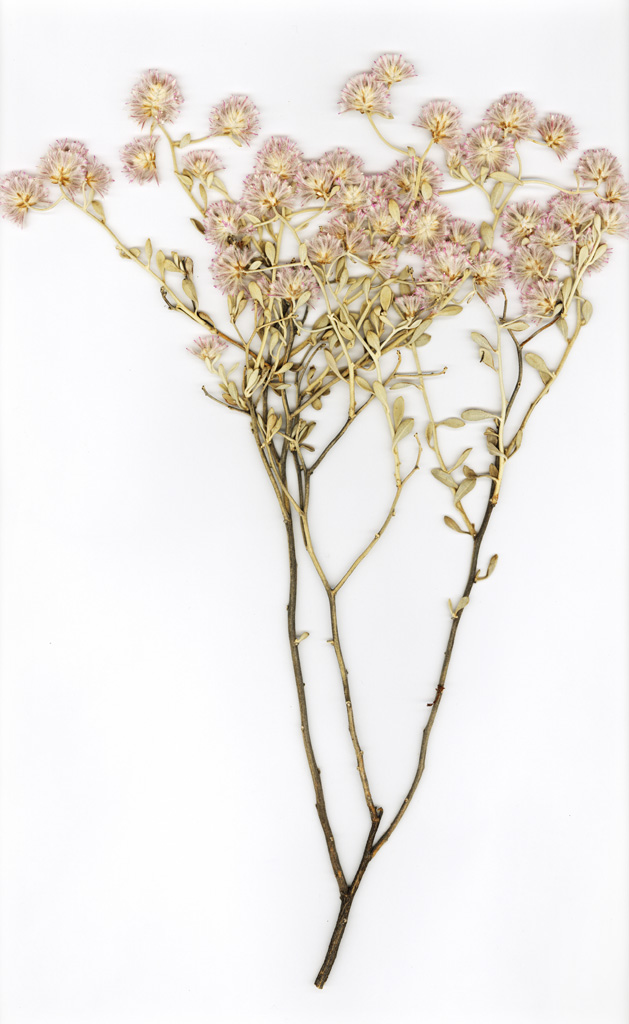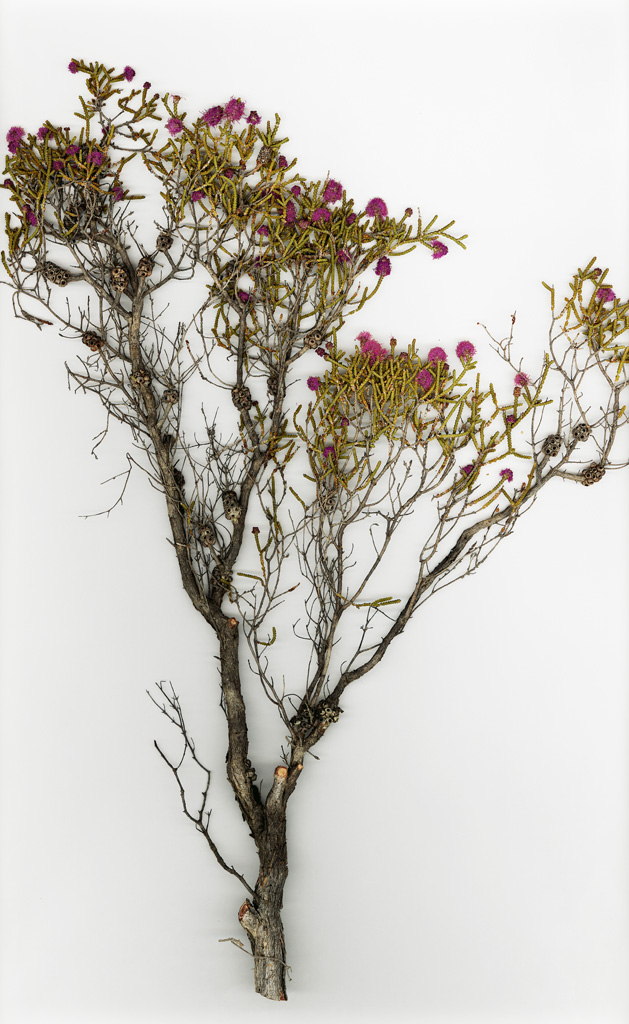7.
Baccharis halimifolia
Linnaeus, Sp. Pl. 2: 860. 1753.
Sea-myrtle, consumption-weed, eastern baccharis
Baccharis halimifolia var. angustior de Candolle
Shrubs or trees
, 100—300(—600) cm (freely branched).
Stems
erect to ascending, slender, striate-angled, glabrous or minutely scurfy, sometimes resinous.
Leaves
present at flowering; short-petiolate or sessile; blades elliptic to broadly obovate or rhombic, main cauline rhombic, 30—50(—80) × 10—40(—60) mm (thick and firm), bases cuneate, margins entire proximally, usually coarsely serrate distal to middles (teeth 1—3 pairs), faces glabrous, gland-dotted, resinous (distal reduced, entire).
Heads
3—4 in loose pedunculate clusters in (terminal, leafy-bracted) broad paniculiform arrays.
Involucres
campanulate; staminate 3—5 mm, pistillate 3—5 mm.
Phyllaries
ovate to lanceolate, 1—4 mm, margins scarious, medians green, apices obtuse to acute.
Staminate florets
25—30; corollas 3—4 mm.
Pistillate florets
20—30; corollas 2.5—3.5 mm.
Cypselae
1—1.8 mm, 8—10-nerved, glabrous;
pappi
8—12 mm.
2
n
= 18.
Flowering Aug—Nov. Open sandy places, wet fields, marshes, beaches, disturbed sites, roadsides, old fields; 0—100 m; N.S.; Ala., Ark., Conn., Del., Fla., Ga., La., Md., Mass., Miss., N.J., N.Y., Okla., Pa., R.I., S.C., Tex., Va.; Mexico (Nuevo León, San Luis Potosí, Tamaulipas, Veracruz); West Indies; introduced in Europe (France), Australia.
Native to the Atlantic and Gulf Coastal Plain,
Baccharis halimifolia
is recognized by its broad, distinctly rhombic, coarsely serrate basal leaves, pyramidal, leafy arrays, and cypselae with large fluffy pappi. The plants are often to 600 cm; the basal leaves might be missed by collectors. Forms with relatively narrow leaves are especially common in Arkansas, Louisiana, and east Texas. These may be the result of hybridization and introgression with
B. neglecta
, in areas where they are known to hybridize (D. J. Zanowiak 1991), or with
B. angustifolia
. Hybrids between
B. halimifolia
and
B. angustifolia
are known from Florida as well.
Baccharis halimifolia
has been introduced to Australia and France. In Australia it infests large areas along the coast of southern Queensland and New South Wales. Its success as an invasive weed is attributed to production of a large number of seeds that are widely dispersed by the wind, shade tolerant germination and seedlings, tolerance to wet soils and salinity, and ability to resprout after a fire (W. E. Westman et al. 1975). The leaves of
B. halimifolia
contain a cardiotoxic glycoside known to cause the death of sheep if they eat about one percent of their body weight in leaves.




